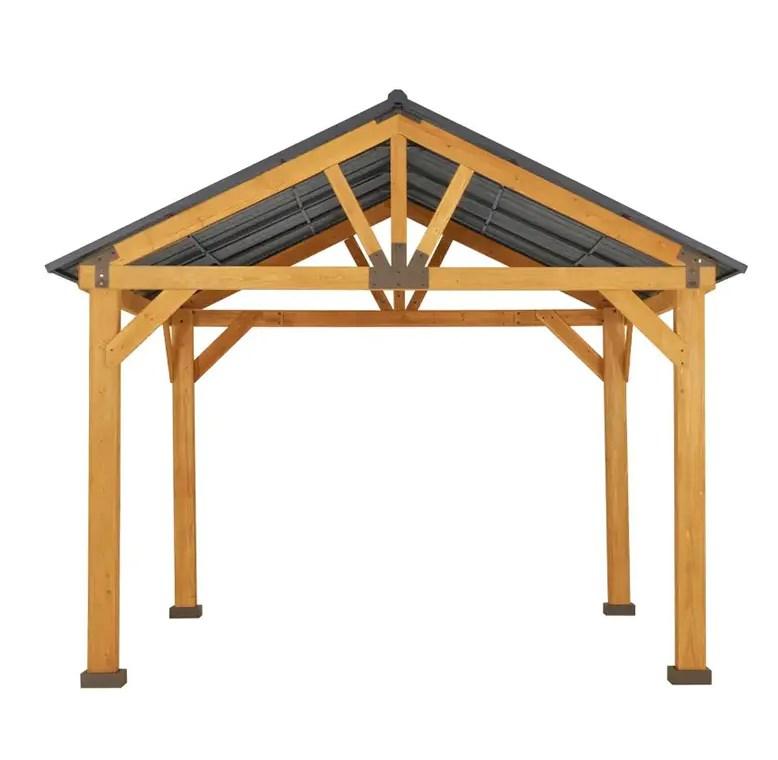Impact of Wooden Patio Gazebo Roof Structure on Outdoor Shade Quality

Introduction to Roof Design and Shading
A Wooden Patio Gazebo serves not only as an aesthetic centerpiece but also as a functional outdoor shelter. One of its key purposes is to provide shade and protection from direct sunlight, making roof design a critical factor in determining overall comfort. The shape, pitch, and coverage area of the roof all play roles in how effectively the gazebo can block UV rays and create a cool, shaded environment for outdoor activities.
Roof Shape and Sun Coverage
The shape of the gazebo roof significantly influences the shading area beneath it. Traditional gable or hip roofs offer extended overhangs that increase the shaded perimeter, whereas flat or slightly sloped roofs may provide more limited coverage. In addition, multi-tiered or pagoda-style roofs can create additional shade at different times of the day by intercepting sunlight from multiple angles. A well-designed roof shape ensures that the shaded area remains usable even as the sun moves across the sky.
Roof Pitch and Angle Considerations
The pitch or angle of the roof also determines how sunlight interacts with the gazebo. Steeper angles can deflect sunlight during peak hours, reducing the intensity of direct rays and enhancing cooling underneath. Conversely, shallow angles may allow sunlight to penetrate more easily, especially during mornings and late afternoons. Selecting an appropriate roof pitch for the specific geographic location and sun trajectory is essential for maximizing shade efficiency.
Roof Materials and Coverage Options
Roofing materials contribute to both shade and heat management. Solid wooden panels, shingles, or composite roofing provide full coverage, blocking most sunlight and offering protection against UV exposure. Semi-transparent materials, like latticed wood or polycarbonate panels, allow partial sunlight to filter through, creating a softer light effect while still offering some shade. The combination of roof materials and design features determines the balance between light penetration and full sun protection, directly affecting the comfort level beneath the gazebo.
Seasonal and Environmental Adaptability
A thoughtfully designed gazebo roof can adapt to seasonal variations in sun angles. In summer, extended eaves and wider overhangs increase shade coverage, while in winter, the lower sun angle may still allow some light to warm the area. Adjustable roofing options or retractable covers can further enhance adaptability, providing users with flexibility to manage sunlight exposure throughout the year. Environmental factors, such as surrounding trees or nearby structures, can also influence shading efficiency, making roof planning an important consideration during installation.
Optimizing Shading Through Roof Design
The roof design of a Wooden Patio Gazebo plays a pivotal role in determining its sun-shading effectiveness. Factors such as roof shape, pitch, materials, and coverage area all contribute to the comfort and usability of the outdoor space. By carefully considering these elements during design and construction, homeowners can maximize shade, reduce heat exposure, and create an inviting environment for relaxation and social activities. A well-planned roof ensures that the gazebo not only enhances aesthetics but also provides functional protection from the sun throughout the year.
Material: Steel, Fir Wood
Overall Dimension: 13.1' L x 11.3' W x 9.8' H
Eaves Height: 6.7'
Column Spacing: 11.2' L x 9.2' W
Column Size: 5.25" L x 5.25" W
Beam Size: 75" / 63.5" L x 4.5" W
Windproof level: l6 (39-49km/h/24.5-30.5mph)
Snow load capacity: 200lbs
- Art
- Causes
- Crafts
- Dance
- Drinks
- Film
- Fitness
- Food
- Giochi
- Gardening
- Health
- Home
- Literature
- Music
- Networking
- Altre informazioni
- Party
- Religion
- Shopping
- Sports
- Theater
- Wellness


